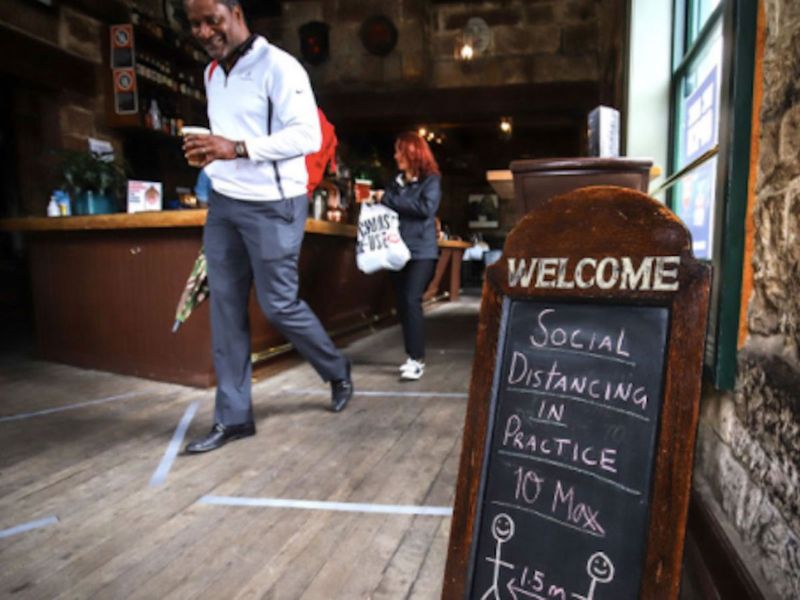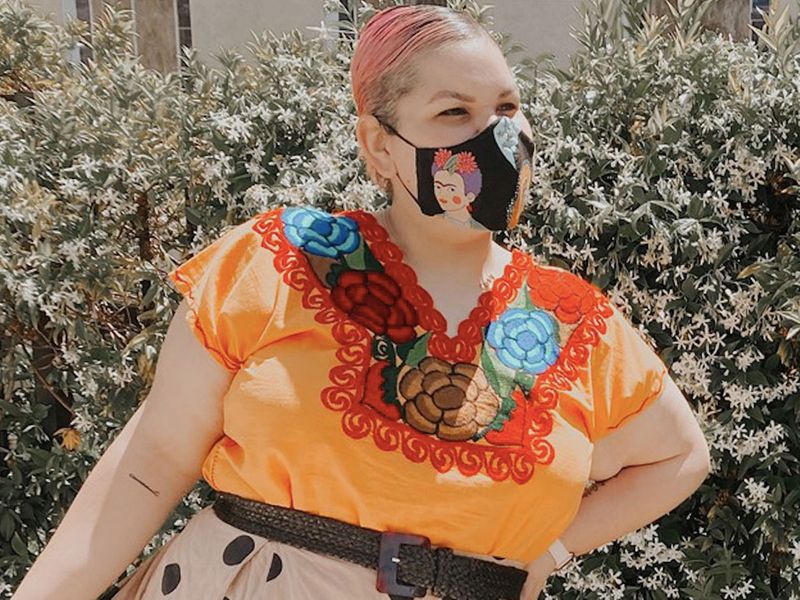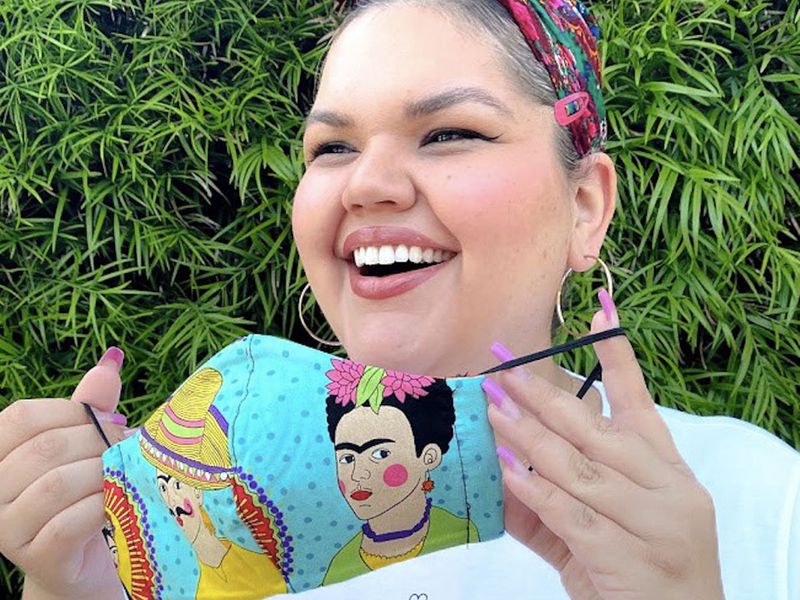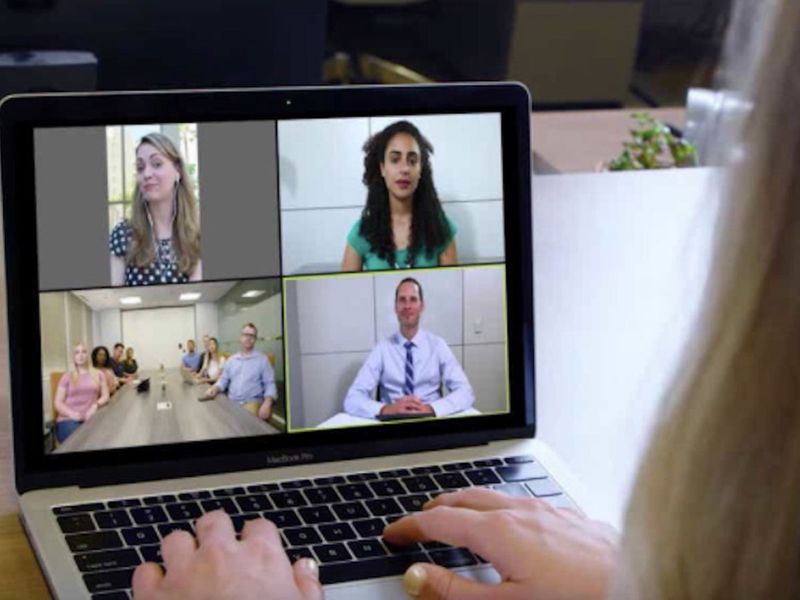
Like millions of others around the world, Gulf News Foreign Correspondent Mick O’Reilly is currently under Covid-19 lockdown. This is what life is like in social isolation in Ireland, where there are strict rules about who is allowed out, where, and under limited circumstances.
DAY 48
Saturday May 16, 9am
IS THERE ANYBODY OUT THERE?
WHERE DID YOU PUT YOUR NYLON STOCKINGS
Where I hear the term “nylon stockings”, I automatically think of my late mother who, whenever she wore them, complained about getting a “run” or snag in a leg pretty much as soon as she put them on.
But now it turns out that with more people fashioning their own homemade face masks to prevent the spread of coronavirus, researchers in the US have found that wrapping nylon stockings around the face coverings can make them considerably more protective.
In a study that has not yet been peer-reviewed, but has been published on a scientific preprint site, researchers from the University of Northeastern University in Boston show how nylon stockings filter out small particles in the air by creating a tighter seal around the homemade face mask.
“Adding a layer of nylon stocking over the masks minimised the flow of air around the edges of the masks and improved particle filtration efficiency for all masks,” the authors wrote in the study.
The nylon outer layer was able to increase the filtering capability of homemade cloth masks to match or even exceed that of medical-grade surgical masks; however, not the in-demand N95 respirators.
The study’s authors said the added protective layer could be an easy, affordable way for people to boost the protectiveness of homemade masks for the wearer themselves.
NOT PROTECTIVE FOR THE WEARER?
Previously, public health officials have warned that homemade fabric or cloth face masks can be worn to protect others in the community, but they’re not considered protective for the wearer.
While the academics said more research is needed, they said the forward-looking intent of the study is to “optimise health protection given resources at hand.”
As researchers explore new methods to increase the protectiveness of homemade face masks, I’ve rounded up some other dos and don’ts to keep in mind if about and about in most of Europe when it comes to face coverings in the time of COVID-19.
Do wear out in public: Public health officials have recommended that people wear homemade face masks when they’re out in public, especially when physical distancing may be difficult, such as in grocery stores and or on public transport. This is to protect others around the wearer because there is evidence the virus can be spread among asymptomatic individuals, or those who don’t have any symptoms of COVID-19.
Do use tightly woven materials: Homemade face masks that are made out of tightly woven material fabric, such as cotton or linen, will be more effective at preventing the spread of the virus, according to most public health advice. They also recommend that masks be made of at least two layers of fabric. They will also be more beneficial if a paper towel or coffee filter is put inside a sewn-in pocket on the mask.
Do ensure it fits snugly: Public health officials say homemade face masks should be large enough to completely cover the wearer’s nose and mouth “without gaping.” The face masks should fit securely to the head and sides of the face with ties or loops over the ears, but still allow for easy breathing.
Do wash it regularly: Face masks should be regularly machine-washed in a hot cycle. However, for the mask to be effective, it shouldn’t lose its shape after washing and drying. If it does, wearers should consider making another face mask with materials that won’t become distorted in the wash.
AND REMEMBER THE DON’TS OF WEARING FACE MASKS
Don’t adjust it or touch it often: Homemade face masks should be comfortable enough so the wearer doesn’t have to frequently adjust or touch it. Health officials warn the wearer might infect themselves with the virus if their hands are often touching their face to adjust the mask.
Don’t share your mask: Public health officials stress that homemade face masks should be made for individual use and they should not be shared, not even among those in the same household. The masks should also not be reused by the original wearer if they become damp or dirty.
Don’t put one on a child under the age of two: Children under the age of two should not wear homemade face masks, public health officials have stressed. Face masks should also not be worn by individuals who have trouble breathing or difficulty removing one without assistance.
Don’t substitute a mask for other precautions: While homemade face masks can help to prevent the spread of virus in communities, public health officials said they should not be used as a substitute for other preventative measures, such as hand-washing and physical distancing.
Masks are just one measure: No mask will ever replace physical distancing. Everything, all of the recommendations regarding staying home, physical distancing, and hand hygiene are based on what is known to protect you.
‘A BIG IMPROVEMENT’
My second cousin Annie O’Brien posted this on Facebook. I had to chuckle. “Shopping for the first time while wearing a mask. By chance I met a few people I know along the way. Every single one had the same response... “Well that’s a massive improvement”.
THE FIRST EASING OF MY LIFE UNDER LOCKDOWN
For the past seven weeks I have been living under the lockdown restrictions in Ireland. Those have generally limited my to exercising within a short distance of my home, and shopping for essential items, and observing strict social-distancing rules.
Most businesses and all restaurants, schools and pubs are closed, and public transport has been working on a skeleton schedule.
From Monday, Phase One of the Irish government’s re-opening plan kicks into place, with a slight easing of rules.
Garden centres, farmers’ markets, hardware and homeware stores will re-open as well as opticians, motor and bicycle repair shops and phone repair shops. Outdoor workers in construction can return including gardeners and those working in allotments. Some large department and household stores will also re-open. Tennis courts and golf courses can also reopen but social distancing will apply.
Up to four people who don’t live together can meet outdoors while keeping at least two metres apart. People are still being encouraged to stay at home as much as possible. Attendance at funerals is being kept to a maximum of 10 people.
WHAT RESTRICTIONS WILL BE LIFTED NEXT?
Phase two of the government’s roadmap is scheduled for June 8 but depends on advice from medical advisors. People will be able to travel up to 20 kilometres away from their home though the advice will be to still avoid unnecessary journeys wherever possible.
Shops will provide dedicated hours for those who are cocooning, who can also have a small number of visitors to their home. Workers who work by themselves and those who can keep a two-metre distance from others can return to work. A slightly larger number of people can be in attendance at funerals and public libraries are also expected to open.
From June 29 small social gatherings will be allowed and crèches and preschools are expected to reopen for children of essential workers. Organisations can open where employees have low levels of daily interaction with people. Phased visiting will begin in hospitals, residential homes and prisons. Cafes and restaurants that can adhere to social distancing guidelines can reopen.
Playgrounds will be allowed to reopen and sporting activities and events can resume behind closed doors “where arrangements are in place to enable participants to maintain social distancing”.
The government’s roadmap makes a distinction between small and large retailers in their plan and when each can open.
GETTING THINGS UP AND RUNNING
From July 20, crèches for all other workers will reopen but on a gradual basis. Those who cannot work from home will return to work. Hairdressers and barbers will reopen as well as museums, galleries, religious places of worship. Hotels and hostels will reopen on limited occupancy. Hotel bars will remain closed. Small social gatherings by family and close friends will be allowed but are to be limited to a maximum number of attendees for a period of time where social distancing can be maintained.
Competitions for sports teams can resume but only where limitations are placed on the numbers of spectators and where social distancing can be implemented.
From August 10 pubs, bars, nightclubs and casinos will reopen where social distancing and cleaning can be complied with. Festivals and other cultural gatherings may be held but with restricted numbers. Large weddings will still be restricted due to risk, as will other large gatherings. Normal visiting will resume in hospitals.
A phased return to normal work will start around this time. Shopping centres will reopen as well as theatres and cinemas that can maintain social distancing. Close physical contact sports like rugby, boxing and wrestling will be permitted. Gyms can reopen where there is regular and effective cleaning.
LATTES AND LAUGHS AFTER THE LOCKDOWN

Up to 10 people only are allowed at restaurants, cafes, bars and pubs like this one in Sydney. Credit SkyNews
As you can see from the details phased re-opening plan for Ireland, there’s a very slow and cautious approach being taken here. That’s a good thing, making sure that public health is paramount while also recognizing the need to get the economy going again.
Down Under, in Australia, they are much farther ahead. Restaurants, cafes and bars in some Australian states took their first cautious steps to reopening on Friday after being closed for nearly eight weeks due to the coronavirus pandemic.
Under the new rules, drinkers and diners are being allowed to return to venues for a maximum of two hours, but only 10 people at a time, and business owners must ensure customers maintain social distancing.
Outdoor exercise clubs and team sports are back on too in groups of no more than 10, and the same number of people can congregate in churches and other places of worship.
Australia, which closed its external and internal borders, imposed an early shutdown of businesses and issued strict social distancing rules in March, has avoided the high numbers of COVID-19 cases and deaths seen in some other countries.
With fewer than 20 new cases of coronavirus being recorded each day, Australian states and territories agreed a roadmap last week to lift the nation’s lockdown and restart its economy by July under a three-stage plan – and each state is setting its own pace in easing their restrictions.
‘DON’T TAKE ADVANTAGE OF RULES’
Gladys Berejiklianm, premier of the country’s most populous state of New South Wales, where people are also being allowed to invite up to five visitors of any age into their homes, warned people not to take advantage of the relaxed restrictions.
“Easing restrictions has failed in so many places around the world and I don’t want that to happen in NSW, I want people to have personal responsibility for the way we respond,” she says.
Schools are also slowly reopening, and public swimming pools with a maximum of 10 people allowed in the water.
“It is such a treat,” Jess Best, who met up with a friend in a cafe in Sydney, told reporters. “To be able to sit down with other people around and chat to my friend. I can have a normal morning, not hiding away in my home.”
But not every business owner is planning to throw open the doors. Simon Matthews, co-owner of a restaurant in Darwin in the Northern Territory, said restricted gatherings would be difficult to manage.
NSW and Victoria, the country’s second most populous state which is retaining most of its lockdown measures, reported a total of 29 new cases on Friday, a slight increase from the recent daily average of fewer than 20.
FACEMASKS AS A CULTURAL EXPRESSION

Designer Ashley Nell Tipton wears a Frida Kahlo themed mask. Credit Ashley Nell Tipton
As I noted above, I am only allowed to shop very infrequently while under lockdown in Ireland. And when I am out on those rare expeditions, I have yet to track down a box of facemasks. They can’t be bought for love nor money it seems.
But I have seen some amazing designs, one that looked like a lizard, another like Mick Jagger and the Rolling Stones’ iconic tongue image, and others that look like animal mouths.
It turns out there’s a whole industry now thriving under some wonderful designers that have turned their creation juices towards face masks. And it seems to be thriving in Latin America and from designers of Hispanic influence.
Frida Kahlo, lucha libras, national flags, or the iconic Puerto Rican coqui tree – Latino designers have turned a health precaution into a means of cultural expression.
As masks intended to curb the spread of the coronavirus become a mainstay amid the COVID-19 pandemic, artists and designers have stepped up to help communities protect themselves with style.
“We have to wear them to be able to go out, and I thought why not be able to wear something that I love deeply,” explains Ashley Nell Tipton, a fashion designer and the winner of Season 14 of the fashion reality show “Project Runway.” “It’s a way of self-expression.”
In recent weeks, the California native told NBC she shifted her company’s production to
focus almost entirely on making masks.
POSITIVE RESPONSE TO SYMBOLS

Designer Ashley Nell Tipton own season 14 of ‘Project Runway’. Credit Ashley Nell Tipton
Topton’s cultural designs include depictions of the Mexican painter Frida Kahlo and cards from the game Loteria, and names these among cultural symbols she loves deeply, adding the community response has been overwhelmingly positive.
“Overnight, our life became masks,” says Andrew Bisaha, Tipton’s manager and her company’s Chief Financial Officer, referring to the sudden and explosive demand for the product. He added that it’s been a learning experience, as over time the team has figured out how to produce large quantities of masks while maintaining appropriate health precautions.
Since the prototype two months ago, Tipton and her team have donated around 5,000 masks to health care workers, and sold over 2,000 to retail customers.
“When people buy these masks, and they put them on, they have pride,” Bisaha adds.
For Marisol Catchings, the artist behind Azteca Negra, a line of Afro Latin jewelry and accessories, inspiration comes from a desire to help others feel seen.
“A lot of times, it’s often overlooked or hidden,” she said of the African influence on Latin American countries. As a black and Mexican woman, she said her cultural background instills in her feelings of love and happiness, and she wanted to create products to help others feel the same. “They get to wear something really awesome that they feel represents themselves,” she added.
STAUNCH ALLY
Catchings combines African and Mexican fabrics in her designs, many of which feature culturally significant patterns, like one mask styled after a serape, a blanket-like shawl that is commonly worn in Mexico and parts of Latin America.
Though Catchings has been cautious about getting others involved in her production amid the pandemic, she has had one staunch ally since the beginning.
“My mom has been the rock through this, just sewing night and day, and I’ve been asking her to take a break,” she says. “But she hasn't.”
A retired banker and one of the biggest supporters of Catchings’ business, her mom was the first to suggest they begin making masks six weeks ago. Aside from making masks for sale, Azteca Negra’s website has an online donation request for first responders and health care workers. In the time since, they’ve donated almost two hundred masks to health care workers and completed nearly 500 retail orders.
To Catchings, the ultimate goal is to alleviate the impact of the coronavirus, and she hopes her efforts will play a role in doing so.
“I hope everyone is wearing a mask, whether it’s my mask or from anywhere. We’d like to flatten the curve and then to stay as safe as possible,” she said. “So, I encourage everyone to wear a mask, and I hope to reach as many people as I can.”
Tipton shares those sentiments.
“I want people to wear it and just feel safe and be proud,” she says.
REFUGEE ASYLUM APPLICATIONS PLUMMET FROM COVID-19

Applications for asylum in the European Union dropped by 43 per cent in March compared to February owing to travel restrictions brought in because of COVID-19, the European Asylum Support Office (EASO) said earlier this week.
There were 34,737 applications were lodged in March, a drop of almost half compared to February. The EASO also noted that before the outbreak reached Europe, applications in January and February had increased by 16 per cent compared to the same months in 2019. Asylum applications in the EU have been persistently high for the last two years.
“March figures are not truly indicative of asylum-related migration trends towards the EU+, but are rather the result of COVID-19 containment measures,” EOSA said.
“Prior to the COVID-19 outbreak in Europe in March, Syrians (14,441) and Afghans (13,245) continued to lodge the most applications for asylum, as well as Colombians (10,155) and Venezuelans (10,098),” the office said. “These four citizenships accounted for 38 per cent of all applications lodged in the EU overall in the first two months of the year.”
The EASO pointed out that asylum offices in each country were affected to different extents by the COVID-19 outbreak, so the 43 per cent drop is not equal across member states.
Non-essential travel remains banned between most EU states and in and out of the bloc, making it difficult for refugees to enter EU countries.
PANDA DOLLS KICK PANDEMIC BLUES IN BANGKOK RESTAURANT

I was reading recently that long before the coronavirus pandemic changed everything from February onwards, there are restaurants in Tokyo that specialise in catering to diners who want to eat alone. They site at segregated solo booths, order on a sheet that’s handed through a slat, and the food is served without the diner ever seeing a server.
But that sad reality of loneliness portends a new reality that will face us all in the months of social distancing and keeping apart.
Now one restaurant in Bangkok is ensuring it meets new social distancing guidelines, and providing lonely diners a bit of company, by seating stuffed pandas at its tables.
Since the country earlier this month relaxed some restrictions on businesses as the number of coronavirus cases slowed, restaurants have been allowed to reopen but with strict rules in place to reduce the risk of the virus spreading.
“Earlier we had only one chair for the tables where the customer came alone. But for me, it felt strange, so I thought I’d give them some company,” said Natthwut Rodchanapanthkul, the owner of Maison Saigon, a Vietnamese restaurant in Bangkok.
Sitting opposite one of the panda dolls, diner Sawit Chaiphuek said he was happy to have some company as he stepped out to eat for the first time in months.
“The doll makes me feel less lonely eating by myself,” said Sawit, 25.
Siriporn Assavakarint, another customer, said the new seating rules often bamboozled diners, and the army of plush pandas made things much clearer.
“It’s a lot easier to understand compared to other restaurants where people always get confused about where to sit and end up sitting too close to each other.”
MEME OF THE DAY
This was shared with me by my first cousin Gus, who lines in Windsor, Ontario. He’s retired from building cars and trucks for some of the US automakers and seems to have a lot of spare time on his hands, which is why I’m inundated with his postings on Facebook. But there is a lot of truth to this one…

TAKING STOCK
HOW I’M PRETENDING TO GROW £10,000 IN PLAY MONEY
Trading on Friday was far more positive, with three of my stocks climbing and the fourth losing just 15p a share, giving a profit of more than £500 on the week’s five days of business.
A reminder that this is all pretend, I started out in lockdown with £10,000 – about Dh45,000 to invest on the London Stock Exchange, I don’t pay for trade and I can only buy or sell when the market is closed. There’s no minimum on the amount of stocks I can buy, just as long as I can afford them.
This is how I stand after Friday and, as things stand, I’ll likely leave my portfolio unchanged for Monday at least. But my 2,600 shares in power generator Drax will be the first to go if I do decide to shake things up a bit.
Net worth: £11,856.08
Diageo, 100 shares: £2743.0
Ocado, 100 shares: £1954.40
Drax, 2,600 shares: £5163.60
PowerHouse 1,200 shares: £1,980.00
Cash in hand: £14.98
£ gain on last trading day: £99.60
% Gain overall: 18.5 per cent
£ Gain overall: £1,856.08
12 RULES TO ZOOM BY

We’re all using Zoom as part of our normal working routines now. I came across this list of 12 rules you should remember when you’re using Zoom – or other video-conferencing programs for that matter
1 Know your role: Are you the host? Set an agenda to make sure it starts on time and the first 10 minutes isn’t spent waving at each other and talking about Normal People. Call people out by name to contribute. Otherwise, everyone will probably stay silent. As a participant, prepare your inputs beforehand and be clear on your objective.
2 Work out your angle: No amount of make-up or ‘Touch Up My Appearance’ filters matter unless you get this one right first. Avoid an “up-angle” at all costs. Raise your laptop onto a pile of books to keep it at eye level. If you’re working off a phone or a tablet, a rolled towel is handy for tilting to the best angle. Take a selfie first to reality test exactly what will be transmitted to the group.
3 Find your light: Always make sure light is in front of you and not behind you. Otherwise, your colleagues will only see a silhouette – it’s a common mistake. Whether it’s a window or a lamp, face the light so you’re clearly visible.
4 Check your background: Your communion photos are cute. Your bed looks cosy. Your colleagues don’t need to see either. Make sure whatever is on a shelf beside you is work-appropriate. If you’re working out of your hot-press, Skype, Zoom and Teams have features that enable you to blur your background or switch to a virtual one (Outer Space? The Golden Gate Bridge?). Whatever you go with, make it as neutral as possible.
5 Keep Zoombombers out: Make your meetings more secure by keeping your invite list small and your event private. Set a meeting password or use Zoom’s waiting room feature to monitor who gets in. 6 Don’t share: Keep meeting links, IDs or passwords on social media to a limited circle and ensure they’re not widely shared.
7 Pretend you’re in the room: Sure, wear your pyjama bottoms. Just ask yourself how it will look if you stand up before the meeting ends. Would you scroll or tap in a real-life meeting? Probably not. Don’t answer the phone. It’s rude both in the physical and cyber world.
8 Let us see you: Turn your video on (if your broadband connection permits). It’s soul-destroying speaking to a black square with a name on it. If you’re using a separate camera, place it close to your screen so you’re facing the person you’re talking to.
9 Be careful: If you’re screen-sharing, clear your desktop and browser of anything private or potentially embarrassing. Be wary of Zoom’s chat function. If the host is recording a call, all chats – public and private exchanges – are saved.
10 Mute: When you’re not speaking, mute yourself – especially if there are more than two people on the call or you’re working from home with others. Your microphone can pick up a lot of background noise. Turn both audio and video off if you’re having an intimate conversation with someone at home.
11 Send an agenda ahead of the meeting: Or you’ll spend 10 minutes of a meeting waving at each other and talking about Tiger King.
12 Lock the door: Only you find your kids and pets that cute. Remember, the workplace is invading their lives, not the other way around. If you think they could interrupt, give the other participants a heads up at the beginning of the meeting that there’s likely to be a disruption.
COVIDIOTS, YOBS AND GOONS
Here’s my daily collection that serves as a reminder covidiots cannot be created nor destroyed, their brainless state merely passes from one form to another
A DESPICABLE ACT BY A PURE COVIDIOT

A family photograph of Belly Mujinga with her daughter Ingrid, issued by her sister Agnes Ntumba. Credit Mujinga family.
Sadly, if this covidiot is ever identified and caught, he will only face common assault charges.
Police in London have recovered CCTV footage of a suspect who spat at a railway ticket office worker who died later from COVID-19 amid fears that spitting is being used as a weapon against frontline workers.
Belly Mujinga, 47, was allegedly spat at and coughed at on the concourse of London’s Victoria station in March by a man claiming to have contracted the virus. She died of COVID-19 two weeks later in a case that has united political leaders in disgust. It comes after a series of reports that key workers across the country are increasingly being spat and coughed at by members of the public during the pandemic.
Mujinga’s employer, Govia Thameslink Railway (GTR), confirmed it has passed video of the incident to the British Transport Police.
CCTV now obtained by detectives contains footage of a potential suspect police want to find in relation to the alleged threatening and spitting at the railway worker who later died from coronavirus, it is understood.
It had been feared that some of the video could have been wiped or not recorded because GTR failed to report the attack at the time. But a police investigation, that only began this week, has managed to recover at least one image of the suspect from one of the cameras.
SMARTLY DRESSED SUSPECT
A witness, who did not want to be named, said the man who spat at Mujinga, and another worker who fell ill, was around 50 years old and smartly dressed.
“The gentlemen looked like a lawyer or something,: the witness said. “He asked us why we weren’t in the ticket office. He said: ‘you know I have the virus’. Then he spat and started coughing. We told our managers to call the police. I don’t know if they did.”
British Transport Police confirmed it received a report of the attack only last Monday, more than a month after Mujinga died. A spokesman added: “We are still in the process of reviewing CCTV opportunities.”
The UK’s transport secretary, Grant Shapps, said the case was “absolutely heartbreaking”, but that it was a criminal matter, not about staff having more protective equipment.
“Nobody should be spat at, this is not a question of [personal protective equipment],” he told Radio 4’s Today programme. “It’s just disgusting and I know the British Transport Police are investigating.”
‘WE ARE ALL VULNERABLE’
Victoria station staff have been speaking about their fear of working after the attack. A gate worker, “My whole body went into shock,” Victor Bangura, 34, said. “I was very, very emotional. We are all vulnerable, in the same station, it could happen to any one of us.”
Linda Freitas, who has worked at Victoria for 13 years, said: “I don’t think people realise how much abuse we get. We have occasions where people become aggressive; it’s very bad, it’s scary.”
Unions representing other frontline workers have warned spitting incidents have risen sharply since the start of the outbreak.
A survey of shopworkers by their union, Usdaw, found abuse and threats by customers had doubled since the start of the outbreak. “Sometimes it is deliberate, when spit is used as a weapon; other times it occurs when customers are extremely angry and end up spitting when shouting,” a spokesman said.
“We had a shoplifter threaten to give us the Covid-19 by spitting in our faces,” one shop worker said. Another said: “I witnessed a man spit into a colleague’s face for not allowing him to take 12 toilet rolls.”
SPITTERS ARE EVERYWHERE IN THE UK
Last week a man in Glasgow was charged with spitting in the face of a police officer and declaring he had coronavirus.
Over the weekend Northamptonshire police said that in just one evening officers had been attacked, spat at and had urine thrown over them. Last month an officer from the force had had to self-isolate after being spat at.
Police Scotland have recorded more than 100 incidents against police officers since the start of the lockdown, including cases where officers were spat at or coughed on.
One 48-year-old man from Inverness was this week jailed for endangering the lives of two police officers by coughing on them last month. The fiscal deputy David Morton told Inverness sheriff court: “Although he was not displaying any Covid-19 related symptoms, particularly in the present climate this caused both the officers, and those with whom they live, significant alarm and distress.”
And last week a woman in north Wales was charged with spitting in the faces of two police officer.
QUESTIONS AND ANSWERS
I’m not an expert, but I might be able to help you make a bit of sense of this. And we can all get through it together. Isn’t this what this is all about.
Send your questions for me to Readers@gulfnews.com.
That’s it for now. Let’s check in with each other tomorrow. I have used files from Reuters, AP, DW, SkyNews, Twitter and other European and North American media outlets in today’s blog. And remember to stay safe.
Mick O’Reilly is the Gulf News Foreign Correspondent based in Europe








